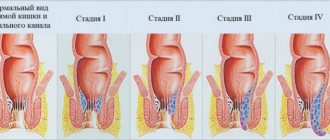What are the precursors of labor and when do they occur?
Precursors of labor are signs that indicate the body is actively preparing for labor. Female sex hormones play a primary role in this process. And if progesterone “rules” in the female body throughout pregnancy, then before childbirth it gives way to estrogens.
The precursors of labor are a training period before delivery. Most often they occur 10-14 days before the baby is born. However, this figure is individual. It happens that precursors appear a week or even a few days/hours before birth.
When should you go to the maternity hospital?
All pregnant women are interested in this question. Let's figure it out. You should go to the maternity hospital:
List
- The appearance of cramping pain during premature pregnancy. In this situation, you should seek medical help as soon as possible. Do not wait for regular labor to develop. Since in most cases it is possible to prevent the development of regular labor and, accordingly, prolong pregnancy.
- Development of regular labor during full-term pregnancy. You shouldn’t take risks, endure and wait for an hour at home. Childbirth should take place within the walls of a medical institution under the strict supervision of doctors and midwives.
- The discharge of amniotic fluid, regardless of the stage of pregnancy. Amniotic fluid may be discharged at once or leakage of amniotic fluid may be observed. If you suspect amniotic fluid leakage or obvious rupture of amniotic fluid, you should immediately contact a medical facility.
- If bloody discharge from the genital tract appears, regardless of the stage of pregnancy, you should immediately call an ambulance.
- . Increased blood pressure is also a dangerous situation during pregnancy and requires immediate medical attention.
We draw conclusions:
- Harbingers of childbirth only indirectly indicate its approach.
- The absence of precursors of labor is not a pathology.
- There is no clear time frame for how long before giving birth a woman will notice certain changes in her body.
- A clear temporal repetition of the precursors of labor in subsequent pregnancies is not always observed. There is a tendency to reduce the time between the appearance of precursors of labor and the development of regular labor in multiparous women.
- If complaints arise that require emergency hospitalization, immediately call an ambulance.
(17 ratings; article rating 4.8)
Share Share Share
What signs are the warning signs of labor?
There are 7 main signs that indicate the approach of labor.
Sign 1: prolapse of the uterine fundus
About 10-14 days before birth, the head of the unborn baby is pressed against the bottom of the uterus and pulls it down. Thanks to this, the uterus descends and stops putting pressure on the organs of the abdominal and thoracic cavity, including the diaphragm. The woman notices that it becomes easier for her to breathe, but sitting and walking on the contrary becomes more difficult.
Sign 2: descent of the fetal head into the pelvis
The closer the birth is, the more the baby's head begins to descend into the pelvis. If the fetus has a breech or leg presentation, then the buttocks or legs descend into the pelvis. The fundus of the uterus begins to put pressure on the bladder, which can cause increased urination. A woman may also experience a feeling of heaviness, bursting pain in the pubic symphysis and lower back.
How to relieve unpleasant symptoms? Consult with the obstetrician-gynecologist who is caring for your pregnancy. Your doctor may recommend that you wear a bandage that will support your abdomen and thereby reduce the load on the pelvic organs and spine.
Sign 3: Cervical maturity
During pregnancy, the cervix is long, tight and closed. But as labor approaches, the cervix begins to prepare for the birth of the baby: it shortens, thickens, and becomes loose. In this case, obstetricians-gynecologists say that “the cervix is ripe or ripe for childbirth.”
Sufficient maturity of the cervix is a necessary condition for the normal course of labor. If the cervix is immature, then natural onset of labor is unlikely in the near future. However, it happens that with an immature cervix, premature release of water is observed. In this case, labor may become pathological (protracted).
The maturity of the cervix is determined during a vaginal examination . Using palpation, the obstetrician-gynecologist evaluates 5 indicators of the condition of the cervix.
- Consistency - elastic-elastic properties.
- Length.
- The degree of patency of the cervical canal.
- Placement of the cervix relative to the pelvic axis.
- The height of the fetal head.
Each criterion is scored from 0 to 2 points. The sum of all points reflects the degree of maturity of the cervix:
- 0-2 - immature;
- 3-4—not mature enough;
- 5-8—mature.
Sign 4: mucus plug coming off
The cervical canal during pregnancy is filled with mucus, which protects the fetus from infection. In the first trimester of gestation, the necessary mucus is produced by the cervix under the influence of special hormones. Subsequently, the mucus becomes denser, turning into a reliable protective barrier against infectious agents.
When the neck shortens, thickens and becomes loose, the mucus softens and begins to come out. During hygiene procedures or going to the toilet, you may see a jelly-like clot on your underwear, which is called a “mucus plug”.
Most often, the mucus plug is colorless, but it happens that it turns into other colors:
- brown. There are capillaries inside the cervical canal. If damage occurs when the plug comes out, the mucus may turn brown and contain streaks of blood. This is an absolutely normal phenomenon that should not be regarded as bleeding;
- white. If a woman has thrush, the mucus plug may be white and have a cheesy coating.
The mucus plug can come out of the body in one go, but sometimes this process takes several days.
Sign 5: weight loss
Throughout pregnancy, a woman's weight increases. This occurs due to the growth of the fetus, enlargement of the uterus, and the accumulation of excess fluid in the body. In addition, some pregnant women gain weight due to overeating.
But before giving birth, on the contrary, your weight may stabilize or decrease by 1-2 kg . This happens for two reasons:
- At the end of the 3rd trimester of gestation, excess fluid is removed from the woman’s body. This occurs due to a decrease in progesterone levels, which provokes fluid retention in the body and the formation of edema. Accordingly, when excess fluid leaves, weight decreases.
- In the weeks before giving birth, many women experience a decrease in appetite and cravings for heavy foods. This is due to hormonal changes and changes in the autonomic nervous system. The female body begins to need light foods - cereals, fruits, vegetables.
Correction of nutrition is very important before childbirth. Products such as dumplings, sandwiches, and fast food take a long time to digest and overload the gastrointestinal tract. And in the last weeks of pregnancy, the body should spend energy and strength on preparing for childbirth, and not on digesting food.
Sign 6: Irregular contractions
A few weeks before giving birth, pregnant women may experience false contractions - rhythmic contractions of the uterus that appear irregularly and are short-lived. Why are such fights necessary?
The uterus is a muscular organ. And in order for the muscles of the uterus to do their job well during childbirth, they need preliminary training. False contractions are such training.
How can you distinguish false contractions from real ones?
- Record the time and determine how often contractions occur. If the intervals between them are not the same, then these are training contractions. Labor pains are regular.
- Listen to your feelings. Labor contractions are always accompanied by pain. There is no pain during training contractions.
- Take a warm shower, lie down in bed and relax. If you are having training contractions, they will go away after you relax. If these are real fights, then their dynamics will only intensify.
Training contractions can last 10-14 days. As a rule, they occur during the day or evening and disappear during sleep.
How to distinguish training contractions from real ones
If this is your first child, then you may be especially worried about how to understand that labor is coming soon and not make a mistake. This table will help you figure out what signs really indicate the onset of labor and how to distinguish training contractions from real ones.
| You're going into labor | False alarm: labor has not yet begun |
| Contractions are regular and repeat at regular intervals (for example, every eight minutes). | Contractions are irregular and occur at different intervals (for example, ten minutes apart, then six minutes, two, eight, etc.). |
| You experience all three signs: contractions become more frequent, longer, and stronger. | Contractions do not become more frequent, longer or stronger. |
| The sensation of the contraction begins in the lower back and travels forward to the lower groin. | Contractions are felt in the front, in the abdominal area. |
| Changing position or moving does not stop the fight. | When you change position or move, the contraction weakens or goes away completely. |
| Upon examination, the doctor sees that the cervix is softening, thinning or dilating. | There are no changes in the cervix. |
If you are unsure whether you are going to give birth or not, contact your doctor and let him evaluate the situation.
How is childbirth at 39 weeks of pregnancy?
Childbirth at the 39th week of pregnancy is physiological and has a standard course. If labor has begun, you need to concentrate on your feelings. You need to monitor your breathing and take the correct body position. It is important to understand that not only the woman herself, but also the baby needs help, so you need to listen to all the doctor’s instructions and follow them.
There is no need to sit or lie down during contractions. It's better to stay on your feet as much as possible. If contractions intensify, it's time to remember breathing exercises that help relieve pain. You need to breathe deeply and calmly. This will save energy for upcoming attempts.
It is pushing that characterizes the second stage of labor. They can sometimes be confused with the desire to empty the intestines. However, you cannot push without medical supervision. This should only be done on the doctor’s command. When the woman takes a seat in the chair and the body is ready, then you need to start pushing. At this time, the entire volume of air that is in the respiratory tract must be directed down the abdomen. The diaphragm must work, which helps the baby to be born. When the doctor orders you to stop pushing, you need to stop. This time should be used to rest and relax all muscles.
During childbirth, all fears must be cast aside. It is important to help the baby be born, because he experiences stress no less than the woman herself. The birth process takes a lot of energy from a child. It is very important to pull yourself together and not panic. The calmer the woman is, the easier the birth is.
When the baby leaves the birth canal, the final stage of labor will begin - the release of the placenta. At this time, the child will be examined by doctors. The doctor will cut the umbilical cord, the uterus will contract, the placenta will separate and come out along with the membranes and the remaining umbilical cord. The umbilical cord is cut only after the pulsation stops. At the same time, the so-called placenta or placenta emerges. At this point, the birth process can be considered complete.
It is in the first 30 minutes of the baby's life that he will be placed on the mother's breast. This moment will be remembered for a lifetime. The first colostrum is very necessary for the baby for the normal completion of childbirth, for the normal functioning of the intestines, and for the development of immunity. Being close to the mother will make it easier for the baby to adapt to an unfamiliar world.
Intimate life
Previously, all doctors unanimously opposed sex so late in pregnancy. This was justified by the fact that during orgasm the uterus contracts, which can lead to the onset of labor. At this point in time, this theory is not considered correct. Doctors point out that a woman should rely on her own desires and listen to her body. If discomfort and fatigue reduces attraction to a sexual partner, then you should not overstep yourself.
If a woman feels the need for intimacy, then she should not deny herself either. Sex is a gentle preparation of the cervix for an imminent birth, because male sperm contains a special hormone (prostaglandin), which makes it more elastic. Orgasm, in turn, trains the uterus and prepares it for high-quality labor.
Doctors in a number of countries even recommend practicing sex in the later stages of pregnancy as a method of natural stimulation of labor.
It is worth remembering that during sex you need to be as careful as possible, since the baby is very close to the birth canal. If pain occurs, then sexual intercourse should be interrupted. You should also avoid uncomfortable positions and eliminate any pressure on your stomach.
Fetal development
At this time, the child has already grown significantly, so he no longer has enough space in the uterus to make active movements. Now he can only turn slightly, and the woman will feel light internal tremors. With the help of such movements, he begins to train coordination of movements, gradually increasing muscle strength. The expectant mother needs to monitor the frequency of movements. Normally, a child should make himself known at least 10-12 times. It is important to pay attention to the nature of the movements. If they are too intense, or, on the contrary, are absent for a long time, then you need to inform your doctor about this as soon as possible, since such changes are a sign of trouble.
The baby in the womb can react to light and dark. He feels touches on his stomach and hears loud sounds. From the first days of life, the baby will learn to focus his gaze, so you need to smile at him.
The baby is completely ready to be born. His lungs, digestive organs, heart and other systems will already be able to function normally outside the womb. However, they continue to improve, and this process does not end after birth.
At this time, myelination of neurons continues, reflexes are formed, and the nervous system is improved. The most developed will be the sucking reflex. After a few feedings, a chewing reflex will appear.
At 39 weeks of pregnancy, the baby’s pancreas is already active, producing enzymes necessary for digesting food. At the same time, the child’s intestines are sterile and covered with small villi. The first bacteria will appear in it after the baby tries breast milk. Now the intestines contain only meconium (original feces). It can come out either after the baby is born, or while still in the womb, before labor begins. The reason for this may be a lack of oxygen in the last stages of pregnancy. If meconium was passed before the baby was born, then after birth, obstetricians perform bronchial lavage to clean them. As before, the fetus continues to receive nutrients through the placenta, but by the 39th week it begins to age.
Carrying out an ultrasound
An ultrasound examination at 39 weeks of pregnancy can be performed only for special indications. During an ultrasound, the doctor assesses the size of the child and determines the degree of its development.
The condition of the uterus and cervix is also assessed, and the quantity and quality of the pregnant woman’s amniotic fluid is determined. By this time the placenta has the third degree of maturity. The higher this degree, the thinner the walls of the placenta. However, it is through her that the child receives from the mother the antibodies that he needs to form immunity.
An ultrasound examination eliminates the risk of the umbilical cord being entangled in the baby’s neck. However, it is not always necessary to perform a cesarean section when the umbilical cord is entangled. The umbilical cord itself can reach 65 cm in length, so a woman is able to give birth naturally, and doctors will simply remove the umbilical cord from the baby’s neck immediately after his birth. Even if the umbilical cord is short and begins to tighten as the baby passes through the birth canal, doctors are able to decide whether an emergency cesarean section is necessary.









